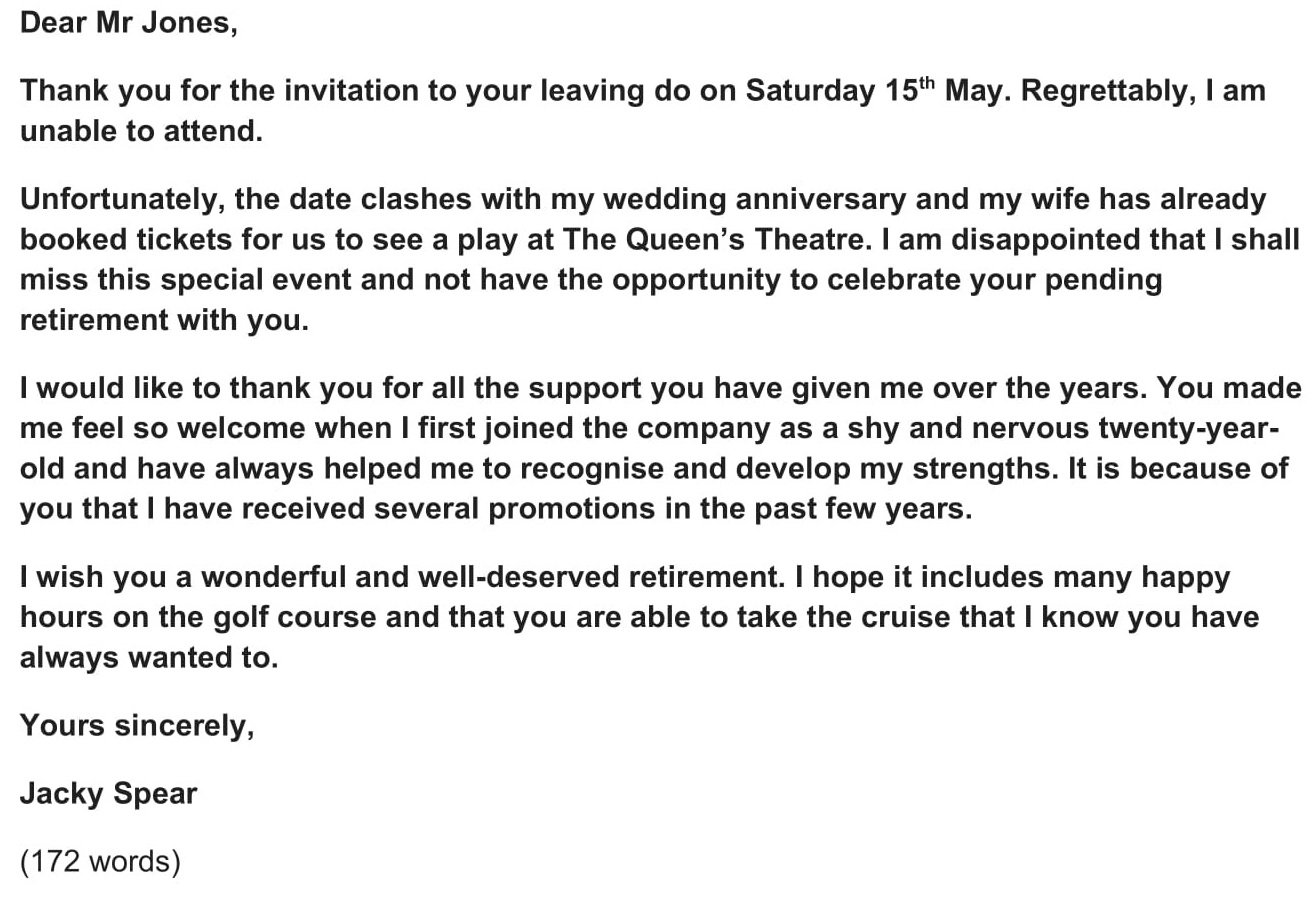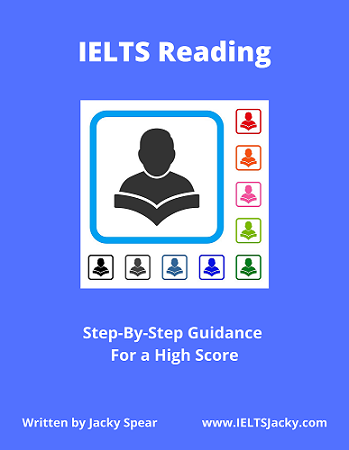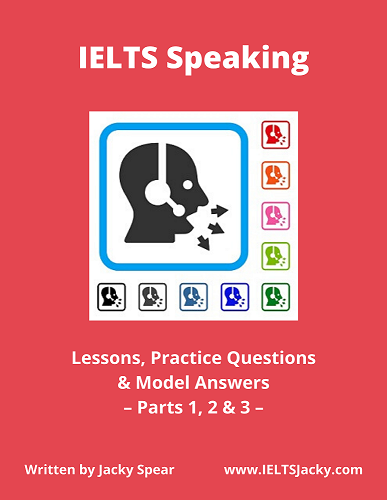How To Write a
Formal IELTS Letter
To write a high-scoring formal IELTS letter, you need to get the structure right. This is one of the things you’ll learn in this lesson.
The lesson will also take you step-by-step through the process of writing a formal letter.
Here’s what we’ll be covering:
- 6 part letter structure
- Formal or informal? – how to tell the difference
- 4 simple steps of letter planning
- Sample letter
Simple 6 Part Structure
You can use the same basic structure for answering both a formal IELTS letter and an informal one. Ideally, your essay should consist of 4 paragraphs with a greeting at the beginning and a signoff at the end.
1) Dear .....
2) Paragraph 1: Purpose – why you are writing
3) Paragraph 2: Write about 1st bullet point
4) Paragraph 3: Write about 2nd bullet point
5) Paragraph 4: Write about 3rd bullet point
6) Signoff
With only 20 minutes allowed for the task and a requirement of just 150 words, you won’t be able to include much detail.
The main paragraphs (2, 3 and 4) only need to be around 50 words each. Aim for quality in your letter, not quantity – the right information written in a logical order. Having a structure to work with will help you to achieve this.
Formal or Informal?
How To Tell The Difference
Your first task is to decide if the question requires you to write a formal IELTS letter or an informal letter. If you get this wrong, you'll get a low score for Task Achievement.
The two types of letter have a very different tone and style and the language you use will also vary.
It’s very simple to tell the difference. Follow this rule:
- If the question includes the word ‘friend’, use informal language.
- If the question does not include the word ‘friend’, use formal language.
Here are examples of two questions that require formal letters.
Question 1
You are unable to attend the farewell party for your manager at work.
Write a letter to him/her. In your letter:
- say why you can’t come
- tell them what you valued about working for him/her
- give him/her your best wishes.
Question 2
You recently ordered something online. When the delivery arrived, it was not complete.
Write a letter to the company. In your letter:
- explain what you ordered and what was missing
- explain the importance of the delivery
- ask for a replacement item to be sent.
Sometimes,
students get confused by a letter
that is to a work colleague or manager who you could be friends with. In this
situation, you may have been taught to use a semi-formal tone.
My opinion is that learning a third style of letter writing is unnecessary. You already have enough other things to learn.
For your test, assume that they are not a friend and write the letter in a professional style, that is, in a formal tone.
The other situation that can be confusing is where the person you have to write to is a neighbour. Again, assume that you do not know them very well and write a formal IELTS letter.
If you follow the rule of only writing an informal letter when the question contains the word ‘friend’, you’ll be fine.
4 Simple Planning Steps
You must plan your letter before you begin writing. Planning will:
- Save you time
- Result in a more relevant answer
- Help you to meet the marking criteria
There are 4 steps to writing a high-scoring formal IELTS Letter.
# 1 Understand the topic
# 2 Identify who you are writing to
# 3 Identify the 3 things you must write about
# 4 Generate ideas
Once we’ve completed this quick and simple process, we’ll be ready to write a high-quality letter.
For my step-by-step guidelines, I’m going to use the first of our sample questions. Here it is again:
You are unable to attend the farewell party for your manager at work.
Write a letter to him/her. In your letter:
- say why you can’t come
- tell them what you valued about working for him/her
- give him/her your best wishes.
# 1 Understand the topic
The topic of the question will be stated in the first sentence of the question. Here's the topic sentence from our sample question:
You are unable to attend the farewell party for your manager at work.
This is what your letter will be about. It is the purpose for you writing the letter and must be stated in the first paragraph. For example,
Thank you for the invitation to your leaving do on Saturday 15th May. Regrettably, I am unable to come.
Many
students make the mistake of missing this purpose sentence out but it is very
important. Including it will gain you marks.
# 2 Identify who you are writing to
The person you are required to write your letter to will be stated in the second sentence of the question.
Write a letter to him/her.
‘Him/her’ refers to your manager so this is who you must write to.
# 3 Identify the 3 things you must write about
You must include 3 things in your letter. They will be shown in the 3 bullet points in the question:
- say why you can’t come
- tell him/her what you valued about working for them
- give him/her your best wishes.
You don’t need to write about anything else.
# 4 Generate ideas
Finally, we must think up some ideas to write about for each bullet point. If we do this before we start writing, we’ll know what we're going to say and won’t need to keep stopping to think about the next idea.
With only 150 words to write, you won’t need many ideas for your formal IELTS letter. Just be sure to cover the 3 bullet points and develop each idea fully.
Here are a couple of tips to help you:
- Write about a personal experience if possible.
If you have experienced a similar situation to the one you have to write about, use this for your ideas. It will make planning quicker and help you to use natural language.
- You get marks for relevant ideas, not clever ideas.
Your ideas do not have to be the best you can possibly think of. They just need to relate directly to the bullet points. Go with your first thoughts and don’t waste time trying to think of better ideas.
Note your ideas beside each bullet point on the exam paper, like this:
- say why you can’t come
Wedding anniversary. Husband has booked tickets to the theatre.
- tell them what you valued about working for him/her
Felt welcome when new. Supportive. Encouraged to develop strengths.
- give him/her your best wishes
Wonderful retirement. Golf.
We’ll now add all this detail to the letter structure. When you practice, do this as you work through the planning process.
Here’s a reminder of the letter structure:
1) Dear .....
2) Paragraph 1: Purpose – why you are writing
3) Paragraph 2: Write about 1st bullet point
4) Paragraph 3: Write about 2nd bullet point
5) Paragraph 4: Write about 3rd bullet point
6) Signoff
And here is the structure with the detail added:
1) Dear .....
2) Paragraph 1: Purpose – You are unable to attend the farewell party for your manager at work.
3) Paragraph 2: Say why you can’t come
Wedding anniversary. Husband has booked tickets to the theatre.
4) Paragraph 3: Tell them what you valued about working for him/her
Felt welcome when new. Supportive. Encouraged to develop strengths.
5) Paragraph 4: Give him/her your best wishes
Wonderful retirement. Golf.
6) Signoff
Spending a few minutes creating this plan will enable you to write much faster than if you don’t have a plan and will also result in a higher quality letter.
Greeting & Signoff
There
are two parts of the formal IELTS letter structure that we haven’t looked at
yet – the ‘greeting’ and the ‘signoff’.
The Greeting
Always start your letter with ‘Dear...’ and follow these rules:
- Use Dear Sir or Madam if you don’t know the name of the person you are writing to.
- Use Dear + surname if you do know their name, e.g. Dear Mr Smith or Dear Mrs Jones.
You would obviously know the name of your manager at work so just make up a surname for them.
The Signoff
There are three ways you can sign off your letter:
- Yours sincerely
- Yours faithfully
- Kind regards
Follow these rules when deciding which to use:
- Yours sincerely – if you started the letter with ‘Dear + surname’, e.g. Dear Mr Jones
- Yours faithfully – if you started the letter with ‘Dear Sir / Madam
‘Kind regards’ is formal but friendly and is also appropriate for most situations. It is particularly useful if you struggle to remember how to spell ‘sincerely’ and ‘faithfully’.
Always sign off a formal letter with your first
name and surname, e.g.
Yours sincerely,
Jacky Spear
Formal IELTS Letter
Here’s an example of a formal IELTS letter written following the guideline and structure in this lesson.
You'll notice that I haven’t used contraction (e.g. I'm, you’ll). Contractions are informal language and should not be used in a formal letter.

This sample formal IELTS letter is over the minimum word limit so you can see that you don’t have space to include very much detail at all.
Now use what you’ve learnt in this lesson to practice answering other formal letter questions. Start slowly at first and keep practicing until you can plan and write a complete letter in around 20 minutes.
There are lots more tips and help on writing formal IELTS letters in the lessons below.
|
Want to watch and listen? Click on this video. |
Like this page?
IELTS General Writing Task 1 – All Lessons
IELTS General Writing – A summary of the test including important facts, test format & assessment.
Letter
Format – The format, the 7 topics, letter
structure, formal & informal, assessment & marking criteria, sample
questions. Essential information you need to know.
Letter Writing Tips – Learn top tips on how to meet the assessment and marking criteria and achieve a high score.
Letter Writing Structure – Find out how to use this easy to learn letter structure to write a high-scoring letter. Includes a model answer.
How To Plan a Letter – Learn a simple 5 step process & 6 part letter structure. Also, help to understand the question & generate ideas.
Formal or Informal – How to decide what type of
letter to write. Sample questions & 2 model letters.
Letter Writing Vocabulary – Learn useful phrases to help you achieve a high score. Also, know how to start & end your letter.
How To Write an Informal Letter – Step-by-step instructions, simple 4 step plan & 6 part letter structure, model letter.
How To Write a Formal Letter – Step-by-step instructions, simple 4 step plan & 6 part letter structure, model letter.
Letter Topics – Learn the 7 most common letter topics & other popular subjects. Includes 20 sample questions.







